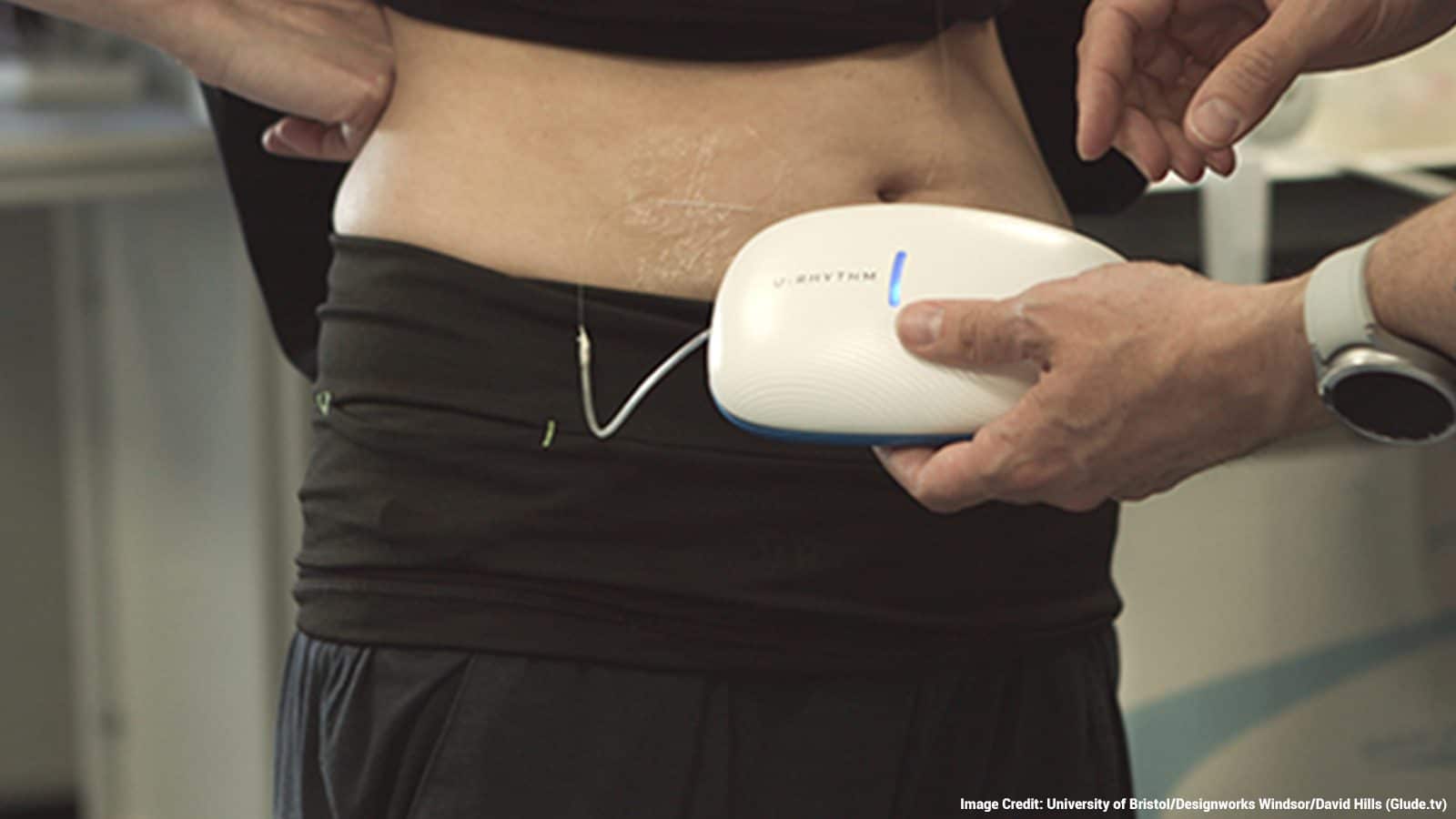This new biohacking device may reduce the risk of high cortisol levels.
In a groundbreaking development, scientists have created a wearable device that continuously monitors stress hormone levels, contributing to cortisol production, over 24 hours. This innovative technology, a result of a collaborative effort by researchers from the University of Bristol, the University of Birmingham, and the University of Bergen, could transform the diagnosis and treatment of diseases related to the stress hormone system.
The wearable, known as U-RHYTHM, is the first to track changes in stress hormones during regular daily activities. It works both during the day and at night. An EU Horizon 2020 project grant funded it. The journal Science Translational Medicine first published these findings.
Stress hormones, such as cortisol, are vital for life. Disruptions in their rhythms due to disease or lifestyle factors can lead to conditions like depression, heart disease, obesity, diabetes, and critical illness. Until now, defining what normal rhythmicity looks like in healthy daily life has been a challenge for scientists.
Traditional methods of hormone testing have been problematic. A single time point test often fails to consider hormonal rhythms, leading to diagnostic delays and missed treatment opportunities. The only way to get an accurate picture has been to take multiple blood samples during a hospital stay. Most people find the process time-consuming, inconvenient, and stressful.
U-RHYTHM, the Wearable Device That Monitors Stress Hormones Around the Clock
U-RHYTHM, developed by scientists from the University of Bristol and designed by Designworks Windsor, is worn around the waist. It painlessly and automatically samples from beneath the skin every twenty minutes without the need for blood collection. The device can sample during sleep, work, and other daily activities for up to 72 hours in a single session.
The study demonstrated the potential of the U-RHYTHM device by analyzing samples from 214 healthy volunteers over 24 hours. Using data across multiple time points in that period, the team created adrenal hormone profiles of healthy people in real-life conditions.
Mathematicians from the University of Birmingham’s Centre for Systems Modelling and Quantitative Biomedicine used this data to develop a new class of “dynamic markers. ” As a result, they now understand better what a healthy hormonal profile should look like, considering factors such as sex, age, and body mass index.
The findings provide a baseline for new, improved ways to diagnose endocrine conditions at a much earlier stage. The researchers believe this technology represents a complete paradigm shift in understanding how the stress hormone system works in healthy people. They believe it may revolutionize how diseases of the stress hormone system are diagnosed and treated.
Stress Hormone Levels and the Overproduction of Cortisol
You might wonder about the significance of this wearable device. The answer is simple–cortisol.
In today’s fast-paced world, it’s common for individuals to experience heightened cortisol levels, a hormone commonly associated with stress. While cortisol plays a crucial role in various bodily functions, an excess can lead to various health issues.

But what is cortisol?
Cortisol, frequently called the “fight or flight” hormone, is a crucial component of our body’s response system. It is synthesized and released by the adrenal glands, small organs on top of each kidney, particularly during stress or danger. This hormone is pivotal in various bodily functions, underscoring its importance in maintaining overall health.
One of the primary roles of cortisol is regulating blood sugar levels. In response to stress, the body needs immediate energy, and cortisol aids in this process by stimulating the liver to produce glucose, the body’s primary energy source. This blood sugar surge gives the body the energy to respond to stressful situations effectively.
In addition to regulating blood sugar, cortisol plays a critical role in our metabolism. It helps determine the rate at which the body converts fats, proteins, and carbohydrates into energy. This metabolic process is crucial for maintaining energy levels, especially during periods of stress when energy demand is high.
Cortisol also has potent anti-inflammatory properties. In the short term, it can suppress the immune system’s inflammatory response to prevent tissue damage. This is particularly beneficial when the body overreacts to an injury or illness, causing more harm than good.
Moreover, cortisol is involved in memory formulation. It influences key processes in the brain that contribute to the creation of memories, particularly those related to emotionally charged events. This function is crucial as it helps us remember important information and learn from past experiences.
However, while cortisol is essential in these short-term responses, prolonged high stress hormone levels can harm health. Chronic stress can lead to a constant state of high cortisol levels, a condition known as hypercortisolism.
When cortisol levels remain elevated for extended periods, it can disrupt various bodily functions. For instance, it can lead to imbalances in blood sugar levels, potentially contributing to conditions like insulin resistance and diabetes. It can also lead to changes in metabolism, resulting in weight gain and increased risk of cardiovascular diseases.
While beneficial in the short term, the anti-inflammatory properties of cortisol can harm the immune system when continuous. This can weaken the immune response, making the body more susceptible to infections and diseases.
Furthermore, chronic high cortisol levels can negatively impact brain function, particularly memory and learning. It can lead to cognitive difficulties, including problems with concentration, memory recall, and learning new information.
Final Thoughts on the Groundbreaking Technology That Can Monitor Stress Hormone Levels
The advent of technology that allows for measuring hormone secretion dynamics throughout the day and night, directly from the comfort of a patient’s home, marks a significant advancement in healthcare. This capability enhances the precision of diagnosing abnormalities in hormone secretion and streamlines the entire diagnostic process.
Traditionally, diagnosing hormonal imbalances requires complex inpatient investigations. These procedures often involved multiple visits to healthcare facilities, extensive testing and could be time-consuming and stressful for patients. However, with the ability to monitor hormone levels in real time, these complex investigations can be largely bypassed. This means that primary care doctors can now manage the entire diagnostic procedure. Thus, they reduce the need for hospital admissions and making the process more comfortable for patients.
Moreover, this new technology can be integrated with cutting-edge diagnostic algorithms. These algorithms, based on the latest medical research and data, can analyze the hormone level data collected by the device to provide highly accurate and personalized diagnoses. This represents a significant step towards personalized medicine, where treatment plans address each patient’s needs.
Another significant advantage of this technology is that it allows patients to participate in their healthcare journey actively. They can monitor their hormone profiles during diagnosis and therapy, providing them with a better understanding of their health status. This empowers patients and fosters a more collaborative relationship with their healthcare providers.
With access to real-time data, patients can have more informed discussions with their doctors. They can ask specific questions about their hormone levels, understand the impact of these levels on their health, and discuss potential treatment options. This can lead to more personalized care plans and improved patient satisfaction.




















